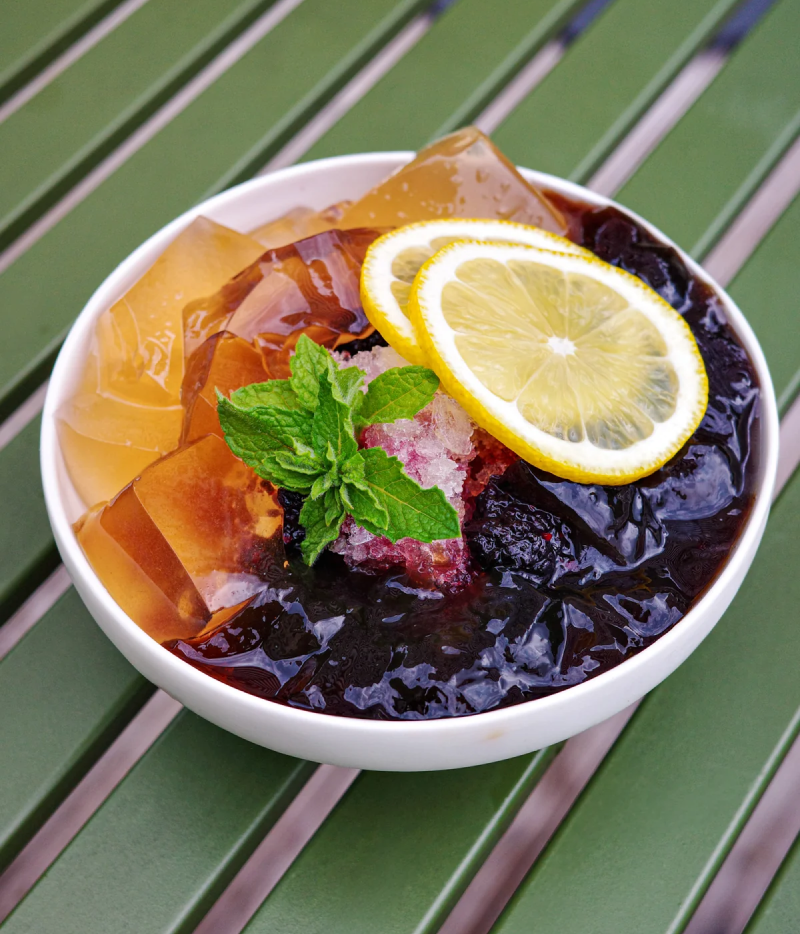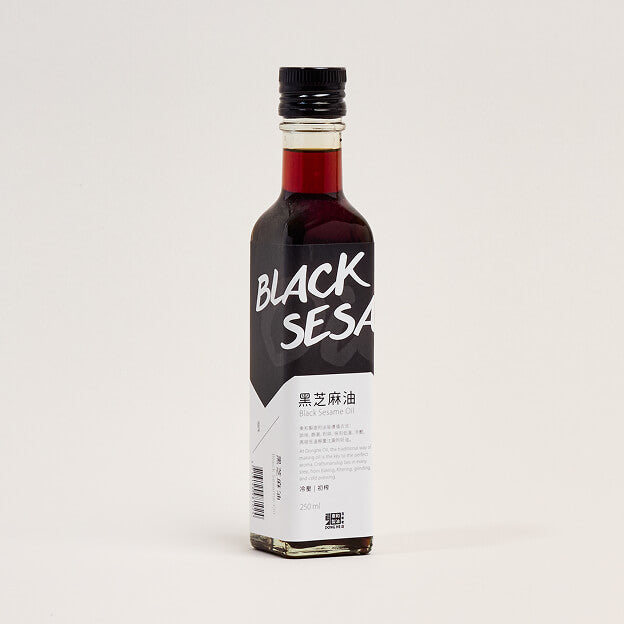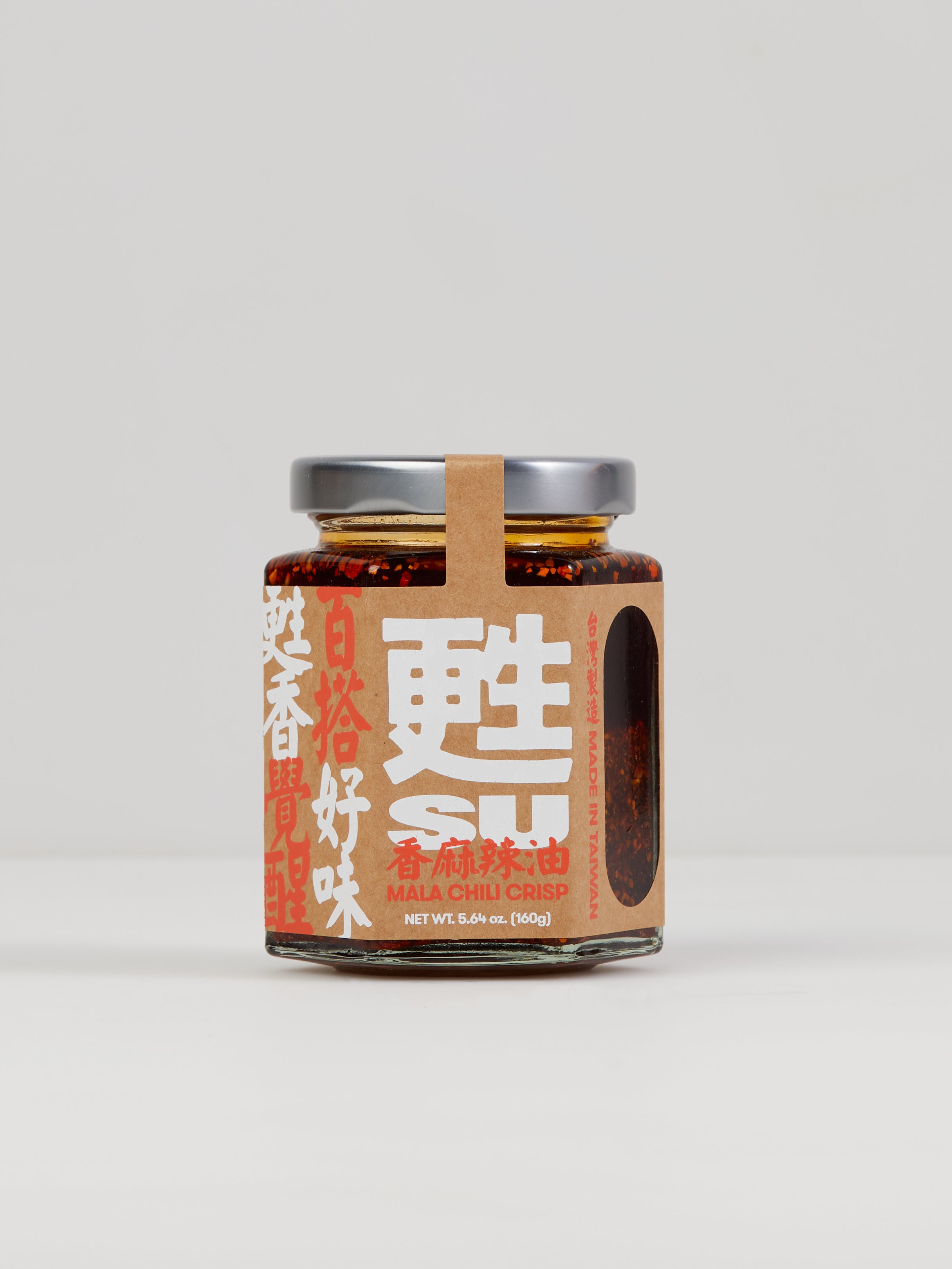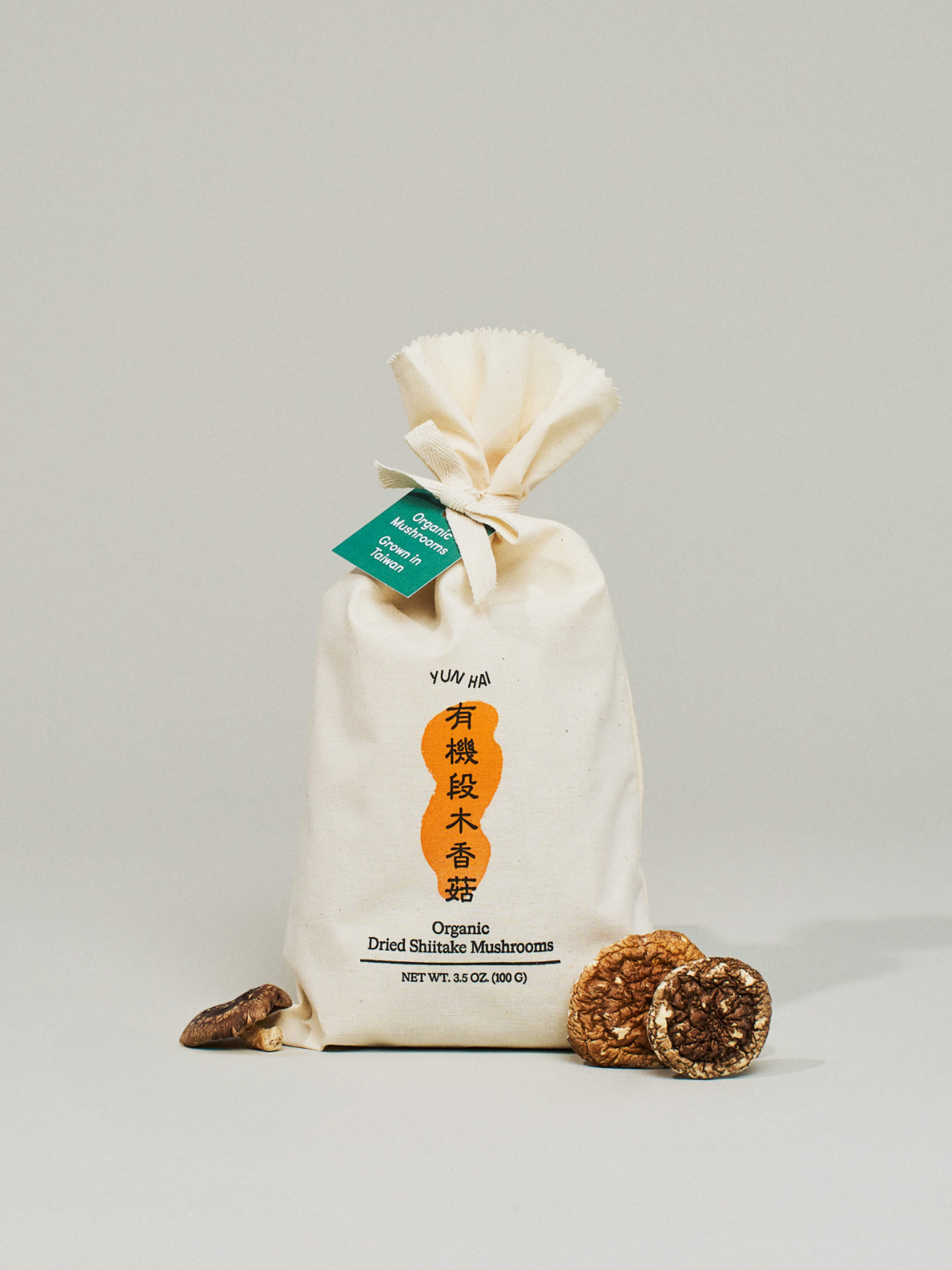Tainan Style Zongzi 台南肉粽
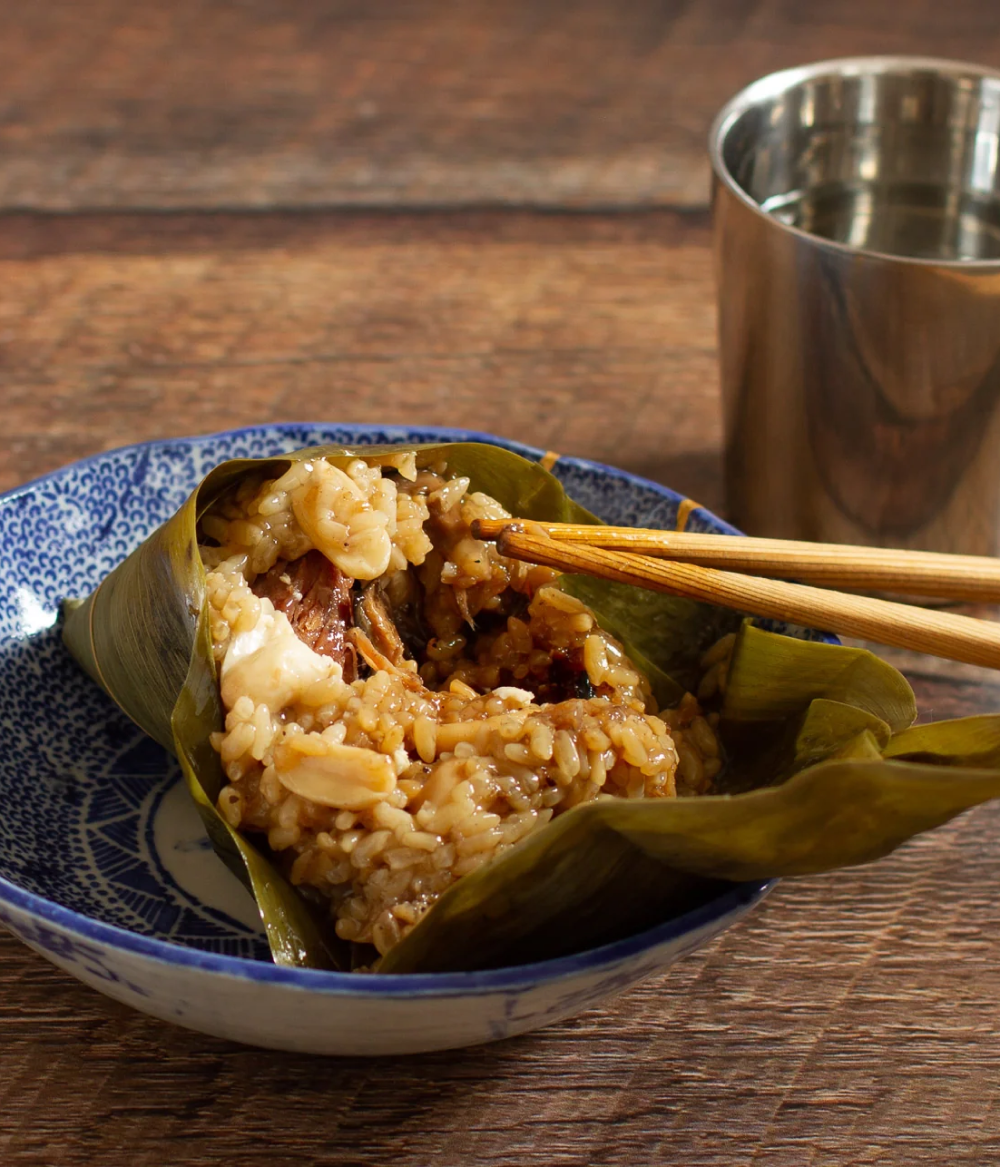
Sticky Rice Dumpling, or Zong 粽 (pl. Zongzi 粽子), is a simple but ingenious food format—glutinous rice is packed tightly into a tetrahedral funnel made of bamboo leaves and tied off with straw or twine. When steamed or boiled, the rice expands and sticks together, creating a chewy, chopstick-able, geometric suspension of rice and other fillings. There are many different styles of Zong, with both sweet and savory ingredients mixed into the rice. The rice might go in raw, parsteamed, stir fried, or even mixed with alkaline lye water for extra chew. In Malaysia, Nyonya Bak Chang are colored bright blue with Butterfly Pea flower and flavored with Pandan leaves.

Here, we present a recipe for Zongzi in the classic style of Southern Taiwan. The rice is lightly seasoned with soy sauces and stir fried, the pork is marinated and browned, salted egg yolk adds brightness, boiled peanuts bring silkiness, and dried baby shrimp, shallots and shiitake mushroom combine with the fragrance of the bamboo leaves to create a distinct herbacious flavor. Northern Taiwan zongzi are steamed, but these are boiled. It's customary in Tainan to top with a sweet peanut powder and a handful of cilantro, then serve with a drizzle of soy paste and sweet chili sauce.
The Dragon Boat Festival (端午節), occurring annually on the 5th day of the 5th lunar month, is the traditional time of year for making Zongzi, but I love to eat them all year round. They freeze well and extract so much flavor from bits and pieces of land and sea. They are economical, easy to scale, and embody the terrain of Taiwan, where bamboo forests, rice paddies, and tiny translucent shrimp are abundant.

Recipe: Tainan Style Zong Zi 台南肉粽
Making zong is labor-intensive. Do this with friends and family, and double or triple the batch if you have the space and resources. Zongzi production is all about community; my mom used to pick up grocery bags full of them from our friend Joan's house. I remember seeing an assembly line of wrapping and packing, with participants jumping in and out. I never helped because I'd be tooling around on Prodigy the whole time, which explains why I experienced so much Zongzi failure as an adult.
Yes, I've tried many times to make these and have failed pretty hard. But, making Zong is like riding a bicycle. One you get the wrapping technique right, it's impossible to forget. And you'll keep getting better and better. Tip: Don't take your chances with possible holes or leaks in your Zong. If you feel you wrapped one poorly, you did. Just dump it out and try again. Apply even pressure and don't let those bamboo leaves intimidate you.
Final tip: Tie them securely but not too tightly, and the rice will expand and seal everything up. These should look precisely made, not engorged.
Our recipe calls for Traditional Firewood Soy Sauce (similar to a light soy sauce), Vat Bottom Soy Sauce (similar to a dark), Soy Paste with Glutinous Rice Grains, and Nyonya Sauce. Substitute the Traditional Firewood Soy Sauce with Amber River or Pineapple Soy Sauce to make this gluten-free.
Yield
16 Zong Zi 粽子
Time
Prep: 2 hours, overnight soaking required
Assembly Time: 1-2 hours
Cook Time: 2 hours, largely unattended
Ingredients
Wrappers
- 38 dried or fresh bamboo leaves (2 for each Zong Zi +6 in case of ripping)
- cotton butchers twine
Meat Filling
- 1.3 lbs (600g) pork belly or pork shoulder depending on preference
- 1/4 cup cooking oil
Pork marinade
- 2 T rice wine or chinese cooking wine (liao jiu)
- 2 T Traditional Firewood Soy Sauce (or light soy)
- 2 T Vat Bottom Soy Sauce (or dark soy)
- 1 t ground white pepper
- 1/2 t five spice powder
- 2 t sugar
- 1 t salt
Additional Filling
- 12-20 dried shiitake mushrooms depending on size
Rice Mix
Garnish
- cilantro (roughly chopped
- peanut powder
- 1/2 cup peanut meal or 1/2 cup roasted peanuts pulverized in a food processor
- 1/2 t salt
- 2 t chinese brown sugar (can substitute normal brown sugar)
- Nyonya Sauce or other sweet chili sauce for dipping
- Soy Paste with Glutinous Rice Grains for dipping
Method: Day 1 Prep (Evening)
We recommend that you prepare these items the night before, but it is possible to do everything on the same day.
Bamboo Leaves
Soak leaves in large pot of water. Place a heavy plate on top to keep them submerged. Allow to soak overnight. Same day: place in pot of water and bring to boil. Turn off heat allow to soak for at least 30 minutes.
Rice
Rinse rice and drain. Cover with at least 3-4 inches of cool water (the rice will absorb a surprising amount). Allow rice to soak overnight in the fridge. Same day: soak at least 4 hours. Rice is ready when you can crush a grain by pinching between your nails.
Meat
Remove any skin. Cut meat into large chunks, roughly 2 in x 1 in. Make sure you have at least 16 pieces. Add rice wine, soy sauce, white pepper, five spice powder, salt, and sugar Allow to marinate overnight in the fridge. Same day: marinate at least one hour.
Shiitake
Soak mushrooms in water overnight. Same day: cover with boiling water in a heatproof bowl and cover with plastic. Let soak for at least 20 minutes.
Peanuts
Soak in water overnight. Same day: simmer for one hour.
Dried Shrimp
If using larger red/orange dried shrimp, soak overnight. Same day: Soak in hot water for 30 minutes).
Method: Day 2
Leaves
- Once leaves have been soaked, remove and rinse in cool, clean water.
- Clean both sides of each leaf with a clean damp cloth or a soft bristle brush. Lean a cutting board up in your sink as a makeshift washing board,
- Rinse again in cool, clean water.
- Cut off the bottom 1/2 inch of the broad end of the leaf. The tough stem will interfere with the wrapping process.
- Keep submerged in fresh water until ready to use.
- If using fresh bamboo leaves, just wash, rinse, trim, and they are ready for use.
Shiitake Mushrooms
- Squeeze liquid from mushrooms. Reserve a 1/2 cup of the soaking liquid.
- Trim stems.
- Cut into halves or quarters depending on size.
Peanuts
- Bring presoaked peanuts to boil in a pot of water. Reduce and simmer for half an hour until softened.
- Drain and set aside to cool.
Pork
- Heat 1/4 cup of cooking oil in wok or pan until shimmering.
- Add shiitake mushrooms and sauté until fragrant.
- Add meat and any additional marinade to pan and stir fry until it begins to take on some color, 3-5 mins.
- Add 1/2 cup reserved shiitake liquid and bring to simmer.
- Cover and simmer for 5 min until liquid is reduced by half.
- Set aside and allow to cool,
- Reserve any remaining liquid.
Salted Egg Yolks
- Cut into halves.
Rice
- Drain remaining water.
- In a wok or pan large enough to hold all the rice, heat 1/4 cup of cooking oil.
- Once shimmering, add shallots and reduce heat.
- Keep stirring until fragrant, making sure not burn the shallots.
- Before shallots begin to turn color, add the shrimp and stir until fragrant.
- Add peanuts and stir fry for 2-3 mins.
- Add rice and seasoning (five spice powder, white pepper, salt, soy paste, and soy sauce).
- Add any liquid remaining from cooking the pork.
- Stir everything together until evenly incorporated and rice grains look coated.
- Taste and add adjust seasoning.
Wrapping/Assembly
Prepare twine
- Cut (4) 60 inch lengths of twine.
- Place lengths together and fold in half.
- Tie a knot about three inches down from the fold to create a small loop.
- Your bundle of twine should now have 8 strands, each 30” inches long with a loop tied at one end. Use the loop to hang the bundle from a cabinet or door handle.
- Prepare two bundles.
Wrapping
Wraapping Zongzi is the trickiest part of the process. Techniques vary from region to region, place to place. We've described our favorite method below, where the leaves are pointing the same direction. The above demo video by 妙招姐 is an easy to follow visual guide. Her method of tying off is a bit different from ours.
- Have ready: Clean bamboo leaves, pork, mushrooms, rice mixture, salted egg yolks, and twine bundles
- Place two leaves together, with the topside of the leaf (smooth side) facing up.
- Leaves should be overlapped by about two-thirds with points at the top.
- Create a funnel by folding bottom about two-thirds up towards top end and folding side about one third towards the center. You can do this in one swift motion.
- Fill with one spoonful of rice mixture and press to create divot.
- Add meat, half egg yolk, and 2-3 pieces shiitake mushroom.
- Cover with more rice mixture to top of funnel.
- Fold remaining leaves over top of funnel with edges overlapping the sides. Use a steady amount of pressure to compress everything into shape. For best results these should be wrapped firmly.
- Fold down to one side remaining leaves and hold firmly around the center.
- Take one strand from your bundle and wrap it around center of Zong Zi twice. Tie it securely around the trapezoidal shape without creating too much of a bulge. After cooking, the expanded rice will create enough pressure to seal everything off. Tie off with double knot. Each bundle should have 8 Zong Zi.
Cooking Zong Zi
- Bring a large pot of water to a boil.
- Place bundles in the pot and make sure Zong Zi are fully submerged.
- Turn heat to high and bring back to rolling boil. Reduce heat to medium-low, cover and simmer for 2 hours. Keep a pot of hot water simmering nearby to top off water level in case it gets too low.
- After two hours turn off heat. They are now ready to eat.
- For best results, cover the pot and allow Zong Zi to rest and cool in cooking water for an additional 2-3 hours.
- Once cool, store Zongzi in the fridge for up to one week or in the freezer for several months. To reheat, boil for 10 minutes or steam over high heat for 15 minutes. If reheating from frozen, double the time.
Garnish and Serve
- Combine peanut powder, brown sugar, and salt.
- Roughly chop cilantro.
- Serve hot. To plate, unwrap and discard the leaves. Top with peanut mix, cilantro, and a drizzle of soy paste and nyonya sauce/sweet chili. Alternatively, serve wrapped dumplings at the table with garnish on the side, and have each guest prepare their own. Don’t forget a pair of scissors to snip the twine.



